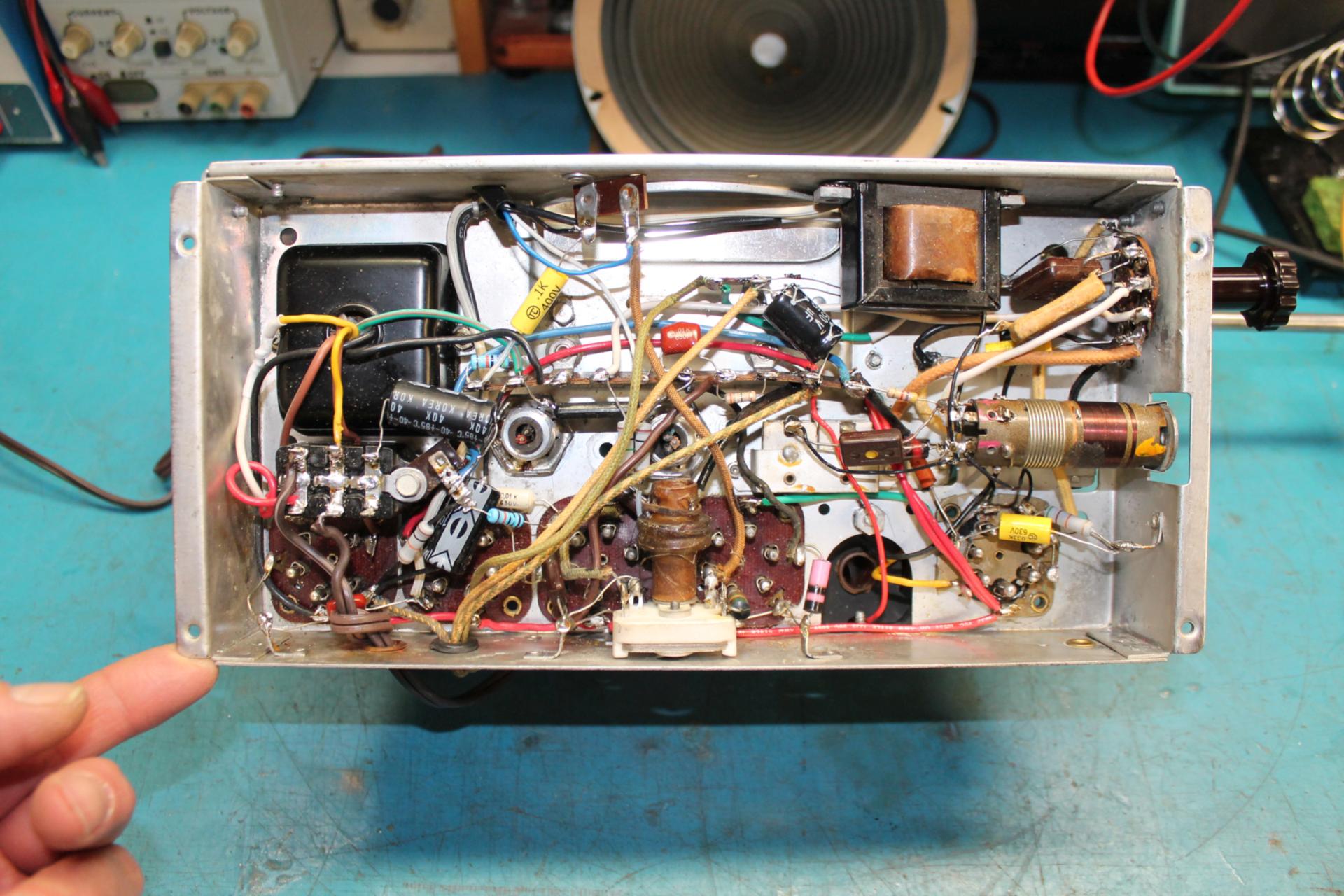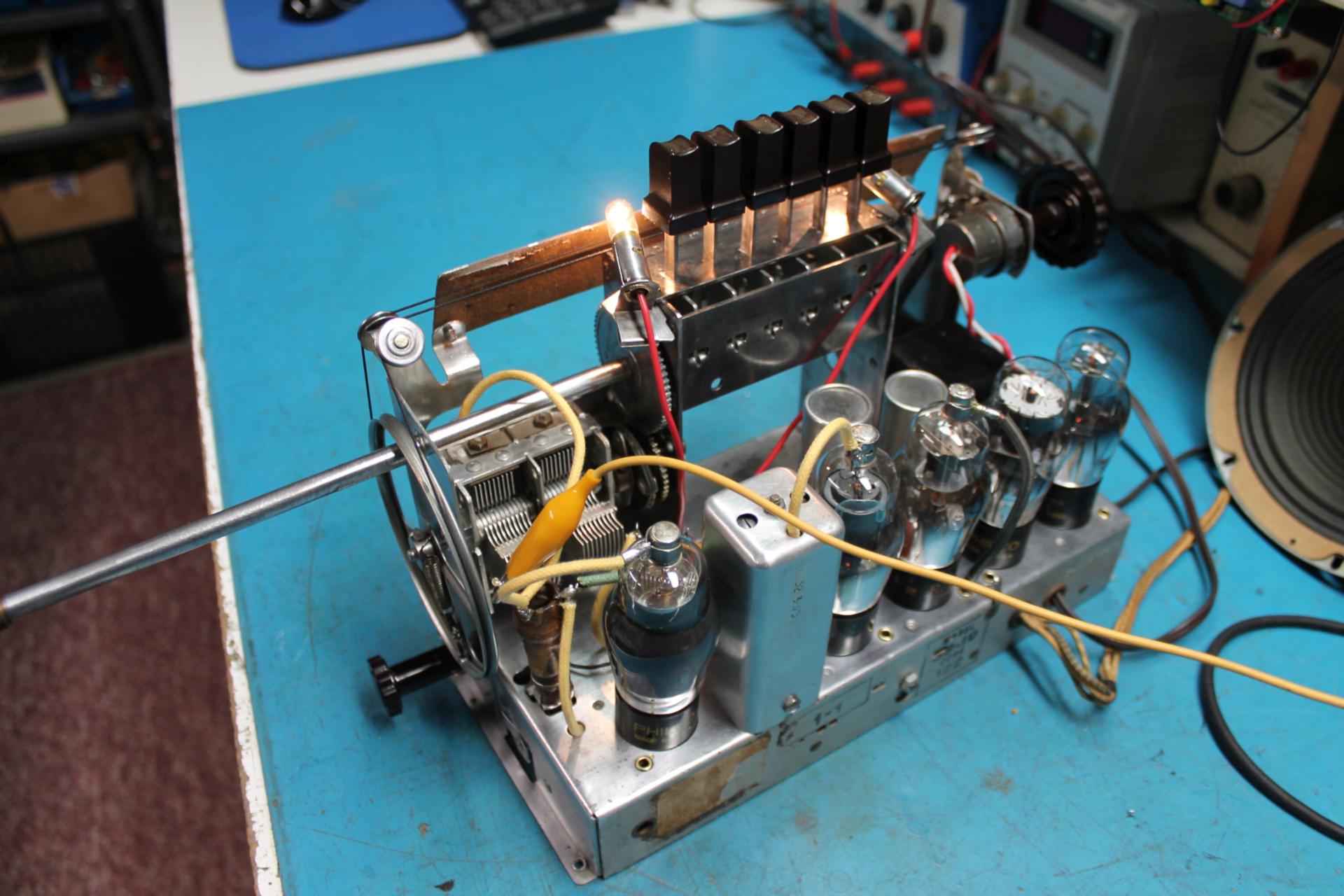Posts: 33
Threads: 5
Joined: Apr 2015
City: Townsend, MA
 02-20-2017, 12:47 PM
02-20-2017, 12:47 PM
Hi guys. I just did a complete electrical restoration on the 1939 Philco console and it has hash noise across the broadcast band. It's present on the shortwave band, but not as prevalent and it varies with the volume pot. It's not smd with this if can type. This was a bare chassis up restoration and I did a triple check against the schematic on the wiring and component values and all look good. All caps, except micas have been replaced, along with most of the resistors. I also performed an alignment procedure more than once. So now I'm wondering if there may be some critical wiring paths to be aware of. Or maybe a faulty tube? A leaky new cap? I have test equipment, including a scope, but I'm not sure how to trace and isolate this problem.
Any help would be appreciated.


Posts: 7,305
Threads: 270
Joined: Dec 2009
City: Roslyn Pa
Hi,
Looks like you did a swell job restoring it. You may want to consider that the noise is coming from the AC mains. Things like cell phone and laptop chargers and computer P/S use what are called switching p/s (read no power transformer) and these thing generate a LOT of Garbage on to the mains. The worst of it is when the battery is low in the devise that is being charged up. This puts the most load on the p/s. Unplug all of this modern junk and I'll bet you will a big improvement.
GL
When my pals were reading comic books
I was down in the basement in my dad's
workshop. Perusing his Sam's Photofoacts
Vol 1-50 admiring the old set and trying to
figure out what all those squiggly meant.
Circa 1966
Now I think I've got!
Terry
Posts: 33
Threads: 5
Joined: Apr 2015
City: Townsend, MA
(02-20-2017, 01:14 PM)Radioroslyn Wrote: Hi,
Looks like you did a swell job restoring it. You may want to consider that the noise is coming from the AC mains. Things like cell phone and laptop chargers and computer P/S use what are called switching p/s (read no power transformer) and these thing generate a LOT of Garbage on to the mains. The worst of it is when the battery is low in the devise that is being charged up. This puts the most load on the p/s. Unplug all of this modern junk and I'll bet you will a big improvement.
GL
No. It's an internal problem. I installed X1Y2 safety caps on the line in and ran this radio off an isolation transformer. I've done scores of restorations and have isolated all the area noise sources. The hardest one to track down was a dimmer on a lamp two floors up and on the other side of the house!
Posts: 16,568
Threads: 574
Joined: Oct 2011
City: Jackson
State, Province, Country: NJ
What kind of noise is it? AC Hum, scratchy, just hissing white/pink, crackling?
If varies with volume, I'd start with replacing tubes first.
People who do not drink, do not smoke, do not eat red meat will one day feel really stupid lying there and dying from nothing.
Posts: 33
Threads: 5
Joined: Apr 2015
City: Townsend, MA
I't similar to the sound you get on FM when there's no signal present. Called hash in the old days. It's there, even when placed near to my AMT3000 xmitter.
Posts: 16,568
Threads: 574
Joined: Oct 2011
City: Jackson
State, Province, Country: NJ
I would definitely look at the tubes.
If not, see if that mica cap of yours is misbehaving (I don't think molded micas are prone to that thing called "silver mica disease" but what if....)
People who do not drink, do not smoke, do not eat red meat will one day feel really stupid lying there and dying from nothing.
Posts: 33
Threads: 5
Joined: Apr 2015
City: Townsend, MA
Nope. Caps and tubes are fine. Anyone else have an idea how to track this down?
Posts: 7,305
Threads: 270
Joined: Dec 2009
City: Roslyn Pa
Ok the short answer is to connect a clip lead to the chassis. Connect the other end to pin4 of the 41 tube. With the set on it should go quite. If not your issue is in the audio output stage. Next take your clip lead and connect it to the grid cap of the 75 tube. Same as before should go quite if not issue is in the 1st audio/det stage. Do the same w/the grid cap on the IF amp, Mixer and finally the ant lead. This will show which stage is noisy.
Turn the set on and to a station and then turn it off. From the monument you turn it off there is a brief monument that it's still playing. Still hear the noise?? If so it coming from the ac line.
Happy hunting
When my pals were reading comic books
I was down in the basement in my dad's
workshop. Perusing his Sam's Photofoacts
Vol 1-50 admiring the old set and trying to
figure out what all those squiggly meant.
Circa 1966
Now I think I've got!
Terry
(This post was last modified: 02-22-2017, 11:35 AM by
Radioroslyn.)





![[-] [-]](https://philcoradio.com/phorum/images/bootbb/collapse.png)


